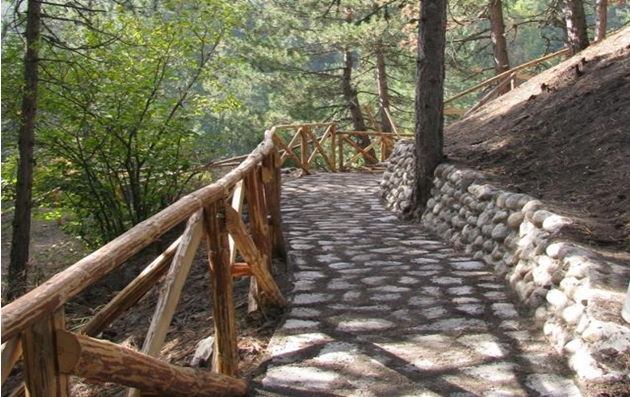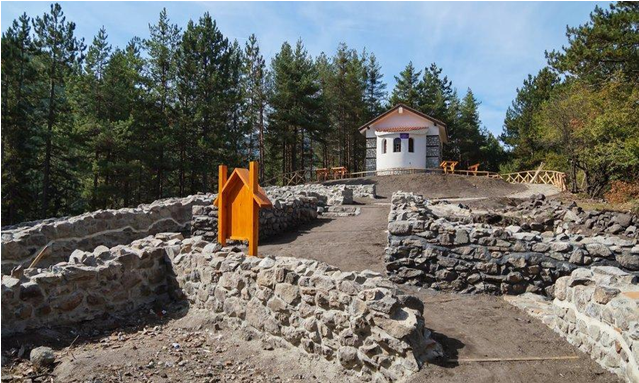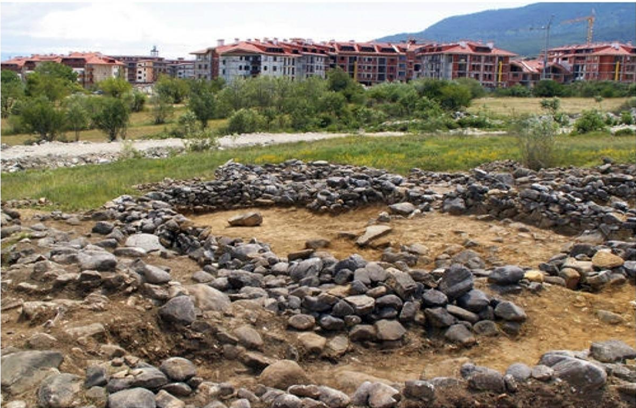Archeology in Bansko – an ancient cultural heritage
If you have visited Bansko at least once in your life, you have already got acquainted with some of the biggest sights of the town, such as the„St. Trinity” church, Velyanova house, Beninata house, Rila nunnery, Nikola Vaptsarov house-museumand many others. Take a walk through the narrow cobblestone streets, explore the little shops, try the traditional cuisine of Bansko, immerse yourself in the history of the town during the Bulgarian Revival Period, and be completely ready to get acquainted with some of the most popular archeological sites that are located near the town of Bansko.

Archeology in Bansko – an ancient cultural heritage
The areas around present-day Bansko have been inhabited since ancient times. They were home to Thracians, dai, Slavs, Romans, Byzantines, Bulgarians. Every culture that has inhabited the area of the town over the centuries has left its unique imprint, and thanks to archaeological studies today we can touch the various layers of the history of Bansko.
In the territory of the town and the municipalityhave been found 78 archaeological sites from different historical epochs, which testify that the area has been inhabited since the Iron Age. Around Banskohave been discoveredfortresses from different periods, monasteries and churches, necropolises, shrines, Thracian mounds, neolithic settlements,as every single object found tells its fascinating and incredible history.
Top 4 archeological sites around Bansko that you can visit while you are on a vacation in the town
St. Nikola archeological complex
Discovered completely by accident, today the archaeological complex “St. Nikola” is one of the most visited sites near Bansko. The complex is situatedbetween Bansko and Dobrinishte, it is located in the area of ”St. Nikola”, where its name comes from. The story of the discovery of the complex is very interesting and fascinating ..
Few people know that the first surveys of the area were made back in 1988 – 1989, but since archeologists have not found much, the decision to study it has not been reached. However, in 2003, during excavation work in the area, workers came across the remains of an old building.
As soon as the foundations of the building were discovered, the team of Vladimir Beryakov, an archeologist and curator of the Bansko Museum Complex, undertook rescue excavations that uncovered the foundations of an early Christian basilica from the end of the IV and the beginning of the V century AD. In the vicinity of the basilica, archaeologists also discovered a necropolis with 28 graves in which people of incredible size (about 2 meters in height) were buried.
The regular explorations (excavations) of the archeological complex began in 2007 and bring more and more surprises. During the study of the site, it became clear that under the feet of archaeologists lies an entire city. The nameless settlement covered an area of 25-30 acres, had an outer and inner city, houses, temples, defense towers and even an ancient sanctuary were also found.
The archaeological site is located about 4.5 km. from Bansko in the direction of Dobrinishte and it can be reached by car (until the beginning of the hill).

Ancient fortress in the Yulen area
On the territory of the Yulen Nature Reservethere is an ancient fortress, which some experts call “Gradishteto” and others “Yulen” (because of the area where it was discovered).
The fortress is 100 meters long and 40 meters wide and according to archaeologists exploring it is pre-Roman and probably played the role of the citadel in ancient times. Archaeologists’ studies have revealed the foundations of a fortress wall on the north side of the fortress and separate fragments of hand-painted vessels.
Researchers at the ancient fortress believe that there is a Thracian sanctuary near the fortress. We hope that excavations will continue to make it clear whether or not there is such a sanctuary. The fort is about 10 – 12 km away from Bansko and it can be reached by asphalt road and marked path leading to hut “Demyanitsa“.
“Sitan kale” – late antique fortress
According to legends, there was a fortress in the Kalyata area near Bansko in which the population of the city and its surroundings took shelter during the Ottoman invasion. Legends also tell that the ruler of the fort was Ban Banko, who was a great warrior and gave a fierce resistance to the Turks before the fort fell.
Knowing the legends, archaeologists initially thought that the legendary fortress was more like a defensive facility, which was simply glorified by local folklore and legends.
However, the truth turned out to be quite different.
The exploration of the Kalyata site began in 1965, and with the first digs, archeologists were surprised to find that they were not in front of the remains of a “small defensive structure” but in front of the ruins of one of the largest late antique and medieval fortresses along the the Mesta River.
The fortress “Setan”, “Stana” or “Kalyata” (as it is called by some of the locals) had not only defense functions but was also a connecting point for several more fortresses on the other side of the mountain. The fortress was huge, had a trapezoidal shape and was surrounded by a deep protective moat. Powerful defense towers rose from the four corners of the fortress, and an observation tower rose from the highest.
In theouter courtyard of the fortress lived the families of the workers and servicemen, and in the inner courtyard were the home of the ruler of the fortress and the homes of his associates. The inner fort was enclosed by high fortification walls, and what amazed archaeologists was that there was a water pipeline about 5 km long inside the fort. Outside the fortress walls was a prison where convicts were being imprisoned.
Archaeologists have discovered numerous glass and iron fragments, ornaments, arrows, spears, fragments of everyday pottery, coins dating from Justinian’s time and remains of ancient Roman buildings during excavations in the Kalyata area that lasted until 2003. All the finds found show that the fortress was inhabited from the III to the XIV century when it was conquered and destroyed by the Ottoman invaders after a long siege.
The late antique fortress “Sitan Kale” is located 5 km. from the resort town and it can be reached by an asphalt road and a well marked andwell maintained tourist path.
Early Christian and medieval basilica with necropolis in the Shipotsko area (Shipotzko)
In 1974, the remains of several archeological sites – an early Christian basilica, a necropolis and a medieval church – were registered in the Shipotsko area, about two kilometers from Bansko. The sites discovered have been declared cultural sites of local importance.
A detailed archaeological survey of the sites in the area began in 1989 and during excavations, archaeologists have discovered layer after layer of history. They have found that initially there was a Thracian settlement and sanctuary in place of the basilica. Later, during the period of early Christianity, a basilica was built with a small chapel adjacent to it.
In the VI century the basilica was burned by Slavic tribes. In the XX century a medieval church was erected on a part of the basilica, near which there was a Christian necropolis, in which more than 200 tombs were found. Of the discovered coins in the necropolis, archeologists have found that people have been buriedthere until the XIII century.
In addition to coins, glass and iron objects, ornaments, pottery and other artifacts were also found in the Shipotsko area.

Archaeologists believe that Shipotsko has more to reveal about the ancient history of Bansko and its surroundings. That is why, over the years, since the discovery of the site until today, the exploration of the area continues and more and more artifacts are coming out of the world, which tell about times gone by.
The early Christian and medieval basilica with a necropolis in Shipotsko (Shipotzko) is located literally next to the residential buildings and newly built hotels in Bansko. The tourist attraction is within walking distance from the central part of Bansko.